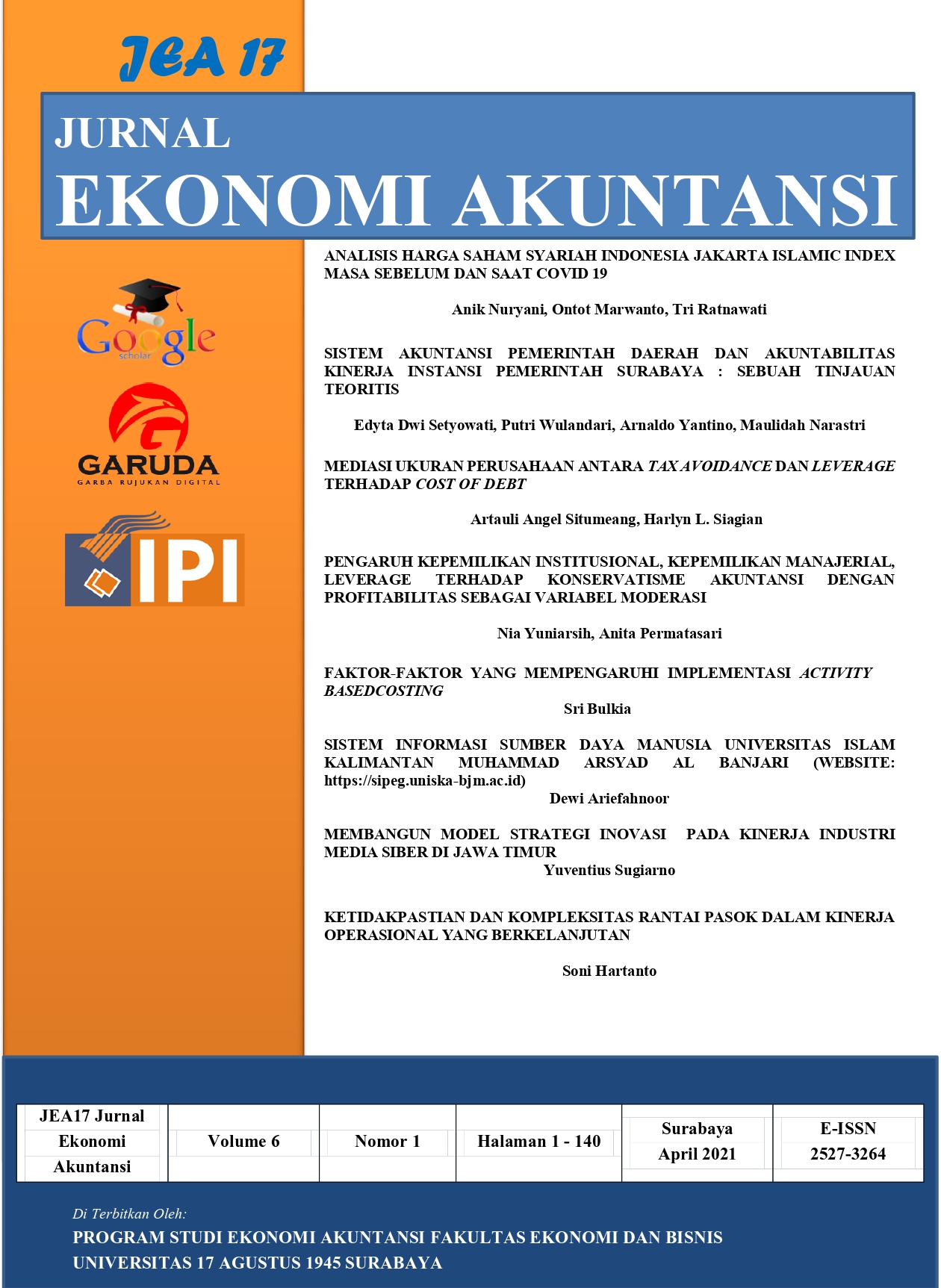SISTEM INFORMASI SUMBER DAYA MANUSIA UNIVERSITAS ISLAM KALIMANTAN MUHAMMAD ARSYAD AL BANJARI (WEBSITE: https://sipeg.uniska-bjm.ac.id)
DOI:
https://doi.org/10.30996/jea17.v6i1.5226Keywords:
Keywords, Human Resources Information System, Qualitative Descriptive Method, SIPEG and Uniska MAB BanjarmasinAbstract
The existence of tertiary institutions as one of the spearheads of improving human resources in the field of education is an indisputable fact. Higher education as a very complex institution requires benchmarks that can be used as a reference in assessing success in its management. One of the main benchmarks that can be used is the existence of an information system. Higher Education Management Information Systems In the Field of Higher Education Data Collection, colleges that are managed with a good information system will be able to control the management of the institution well. Management information system, which is often known by the acronym MIS, is the application of information systems within the organization to provide the information needed by all levels of management. Management Information System (MIS) can be defined as a collection of interaction information systems that are responsible for collecting and managing data to provide useful information for all levels of planning and control activities. Some of the supporters of MIS, the role of Information Technology (IT) as part of an Information System (SI) has changed dramatically. Currently, IT is not only positioned as a tool for organizational activities but has become an organizational strategy to achieve goals. A higher education institution is an academic organization that uses information technology in shaping various business processes in it. This form of organization has its own distinctive character, so that the form of the required information system must have its own character. The Islamic University of Kalimantan (UNISKA) Muhammad Arsyad Al Banjari is the oldest and largest private university in South Kalimantan, founded by the UNISKA foundation based on Bachtiar's notarial deed No. 6 dated July 7, 1981. Currently UNISKA MAB has 9, nine faculties, 20 undergraduate study programs, and 4 PACASARJANA Programs or Masters Study Programs. In this study, research procedures are shown to obtain the current management information system for higher education and the problems that arise in this collaborative higher education data collection activity. According to Sekaran (2000) there are 3 types of research, namely: 1) exploratory research, namely research that aims to seek clarity on a problem; 2) descriptive research, research that aims to find a description of an object; and 3) verificative research (explanatory research), research that aims to answer the problem formulation. This study is a descriptive-qualitative research (descriptive-caulitative research), because it wants to know and at the same time describe the objective conditions of the data collection mechanism carried out by UNISKA MAB and the problems that arise in the data collection collaboration. The approach used is a qualitative approach. Qualitative research starts from the phenomenological paradigm whose objectivity is built from the formulation of certain situations lived by certain individuals or social groups, and is relevant to the objectives of the research. A qualitative approach is used to get an overview of the problems faced by UNISKA MAB in order to improve and empower the higher education management information system. With the following conclusions: 1. Not all lecturers understand and use SIPEG so that it becomes an obstacle to the quality and quantity of Uniska's HR data collection and many lecturers do not take care of Jafung only as teaching staff, 2. Lecturers use Manual and Sipeg Uniska MAB data and 3. Support implementation Uniska HR Management Information System exists but it is not yet optimal because to maximize the need for good IT equipment and campus bandwidth, something good requires large funds.
Downloads
References
McGraw-Hill, Singapore. Sekaran, U. (2000). Research Methods For Business: A skill Building Approach. United State of America,John Willey & Sons,Inc.
Peraturan Pemerintah RI Nomor 61 Tahun 1999 tentang Penetapan Perguruan Tinggi Negeri sebagai Badan Hukum
Peraturan Mendiknas Nomor 38 Tahun 2008 tentang Pengelolaan Teknologi Informasi dan Komukasi di Departemen Pendidikan Nasional
Dr. Ir. Tb. Sjafri Mangkuprawira, Manajemen Sumber Daya Manusia Strategik, Ghalia Indonesia Anggota IKAPI diakses https://www.gurupendidikan.co.id/pengertian-manajemen-sumber-daya-manusia tanggal 10/12/2020 pada jam 11.55 wita.
SIPEG UNISKA MAB diakses https://sipeg.uniska-bjm.ac.id/index.php?m=profile# tanggal 10/12/2020 pada jam 11.55 wita.
PROFIL UNISKA MAB diakses https://uniska-bjm.ac.id/profile-kampus/ tanggal 10/12/2020 pada jam 11.55 wita.
Downloads
Published
Issue
Section
License
Authors whose manuscript is published will approve the following provisions:
- The right to publication of all journal material published on the JEA17: Jurnal Ekonomi Akuntansi website is held by the editorial board with the author's knowledge (moral rights remain the property of the author).
- The formal legal provisions for access to digital articles of this electronic journal are subject to the terms of the Creative Commons Attribution-ShareAlike (CC BY-SA) license, which means JEA17: Jurnal Ekonomi Akuntansi reserves the right to store, modify the format, administer in the database, maintain and publish articles without requesting permission from the Author as long as it keeps the Author's name as the owner of Copyright.
- Printed and electronically published manuscripts are open access for educational, research, and library purposes. In addition to these objectives, the editorial board shall not be liable for violations of copyright law.











